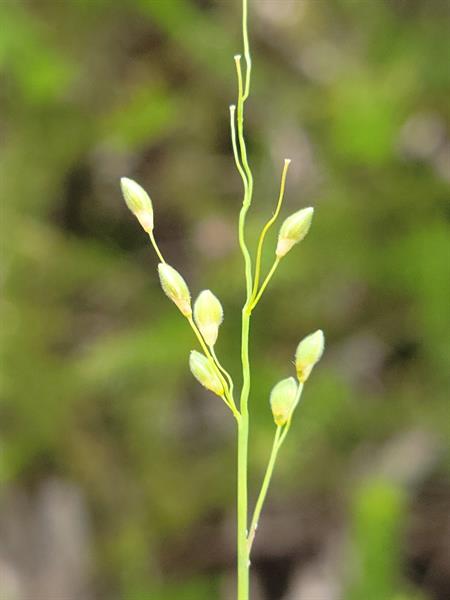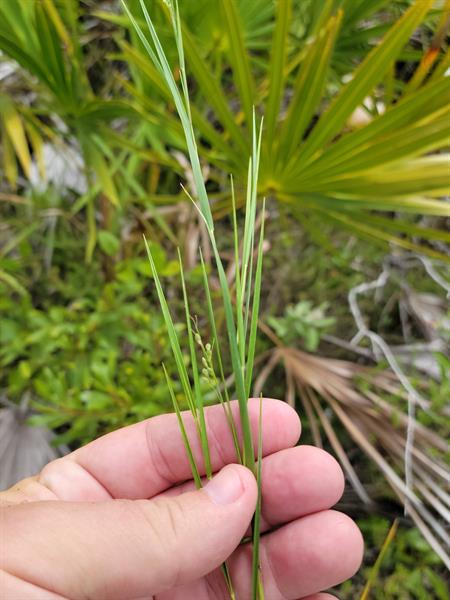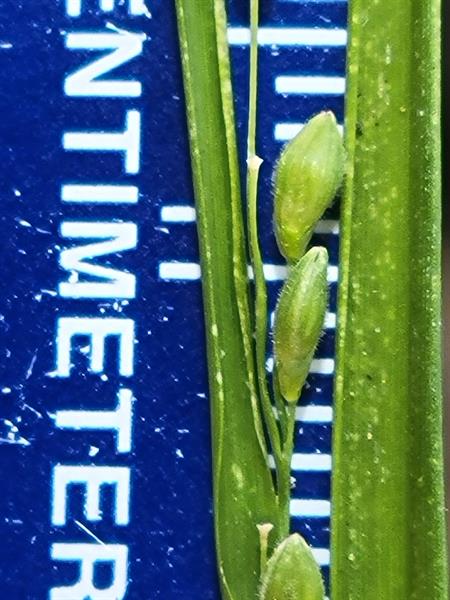
ID notes:Autumnal blades often flat. The autumnal form of D. oligosanthes var. oligosanthes can be very similar to D. fusiforme if the vernal blades of the former are missing. They are best separated by ligule length (0.5-1 mm in fusiforme, 1.5-3 mm in oligosanthes) and the more attenuated ends of the fusiforme spikelet.
Origin/Endemic status: Native
Synonymy: = Va, LeBlond (2017a) in Weakley et al (2017); = Dichanthelium aciculare (Desv. ex Poir.) Gould & C.A.Clark ssp. fusiforme (Hitchc.) Freckmann & Lelong – FNA25; = Panicum fusiforme Hitchc. – F, G, HC, RAB, S, SFla; < Dichanthelium aciculare (Desv. ex Poir.) Gould & C.A.Clark – FlGr, K1, K3, K4, Mex, Gould & Clark (1978); < Panicum aciculare Desv. ex Poir. – C
Wetland Indicator Status:
- Atlantic and Gulf Coastal Plain: FACU (taxonomic split from wetland indicator species)
- Great Plains: FACU (taxonomic split from wetland indicator species)
- Midwest: FACU (taxonomic split from wetland indicator species)
- Northcentral & Northeast: FACU (taxonomic split from wetland indicator species)
Heliophily: 7
Hover over a shape, letter, icon, or arrow on the map for definition or see the legend.
 © Jay Horn source | Original Image ⭷
© Jay Horn source | Original Image ⭷ © Jay Horn source | Original Image ⭷
© Jay Horn source | Original Image ⭷ © Jay Horn source | Original Image ⭷
© Jay Horn source | Original Image ⭷Feedback
See something wrong or missing on about Dichanthelium fusiforme? Let us know here: (Please include your name and email if at all complicated so we can clarify if needed.)
Cite as...